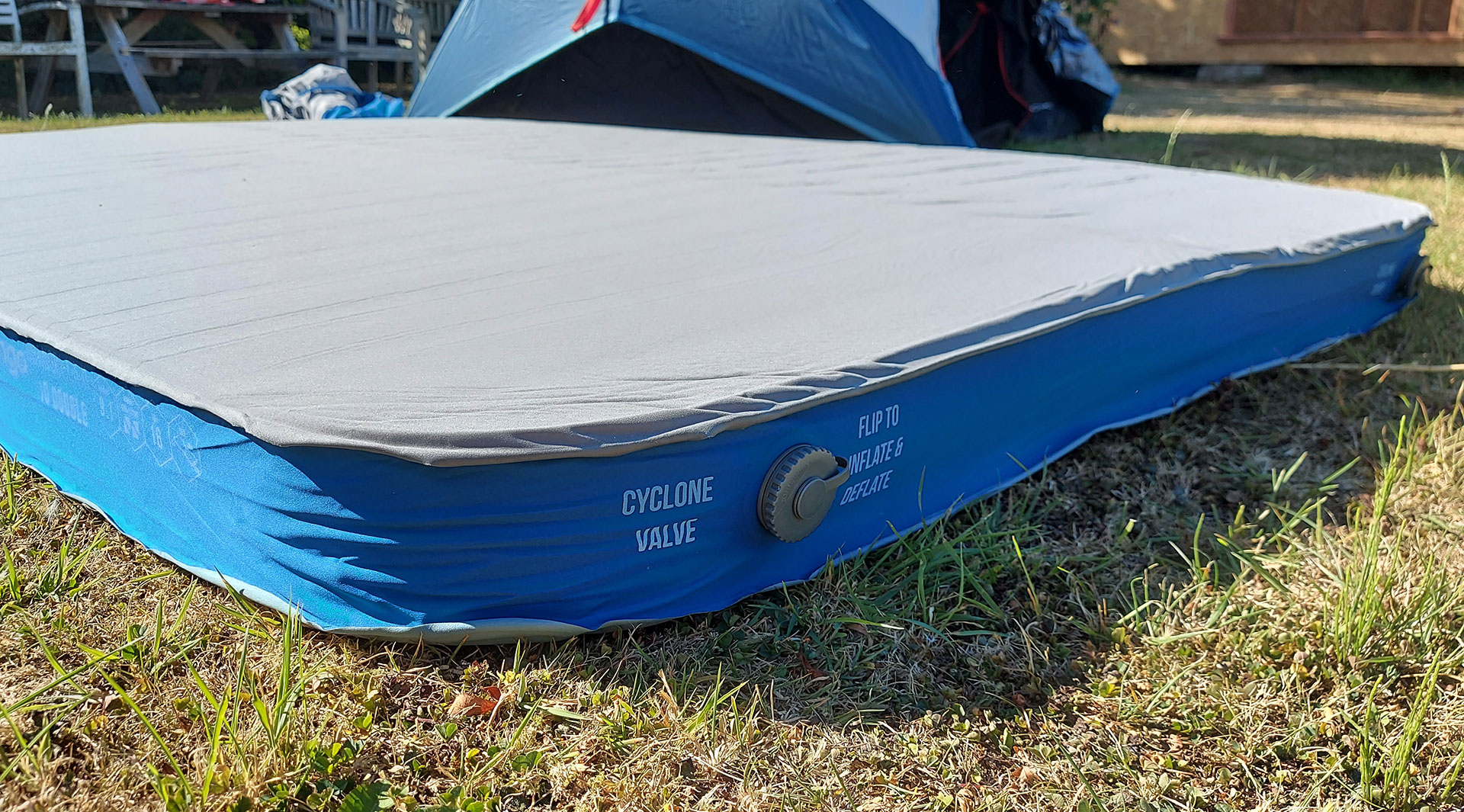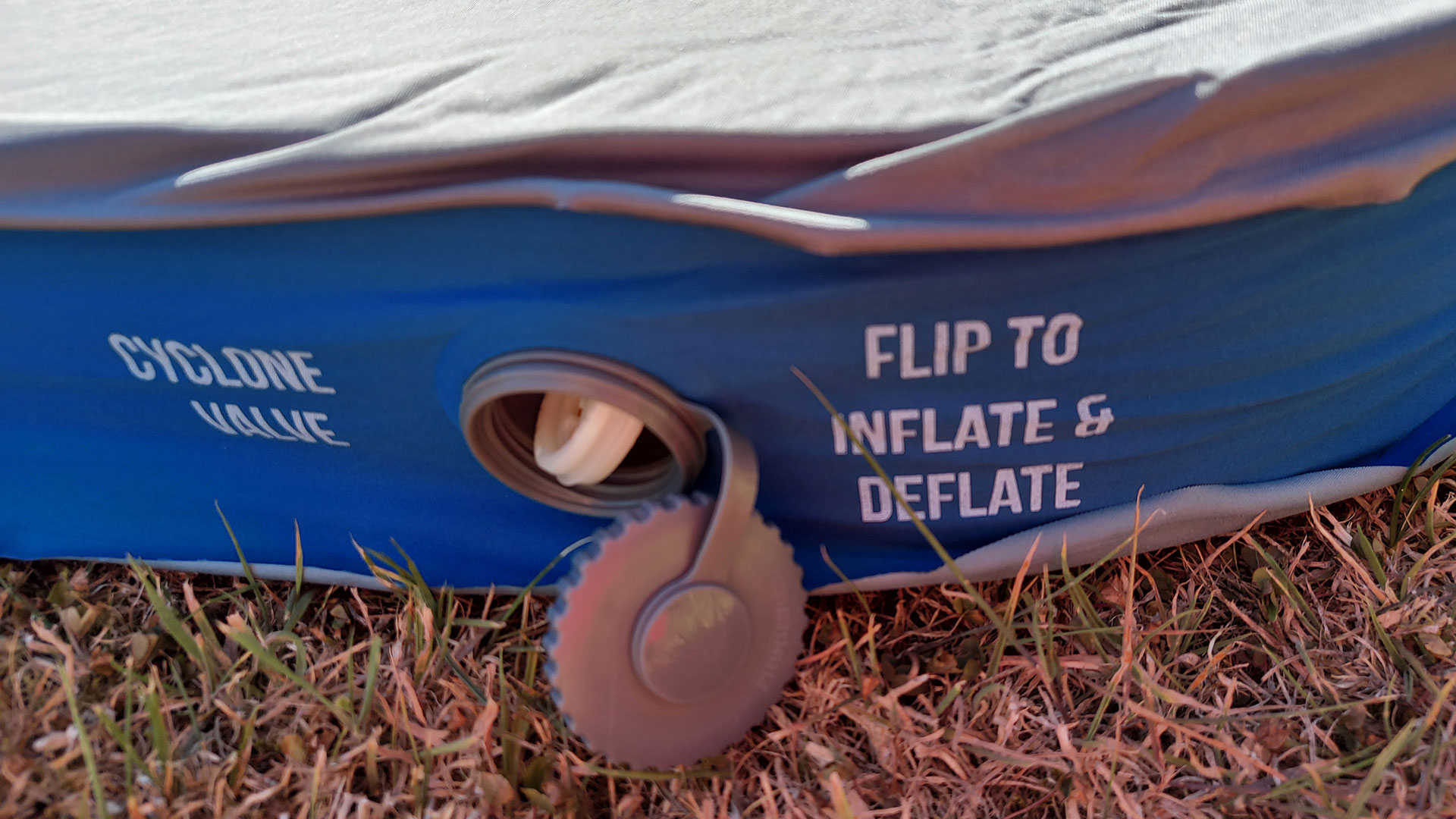Vango Shangri-La II camping bed review
Is the Vango Shangri-La II the comfiest camping mattress ever? Quite possibly. Here's our review


The Vango Shangri-La II is one of the comfiest camping beds you'll ever sleep on, but that dreamy cushioning comes with a significant payoff in terms of weight and bulk. Car campers with roomy boots who want a luxurious experience should look no further.
-
+
Ultra comfy to sleep on
-
+
Valves make deflation simpler
-
+
Self inflating
-
-
Not small, not light
-
-
Takes a while to inflate
-
-
Not the firmest when inflated
Why you can trust T3

The Vango Shangri-La II range is amongst the best camping beds I've come across, and certainly one of the comfiest. It's not for every situation though, mainly because it could in no way be described as a compact or lightweight option. It's self-inflating, comes with a carry bag, and has special valves to make deflation straightforward too.
There are a few options in the range. Pick from 'Grande' (a generous single person's mat) or Double, and from depths of 7.5, 10, or 15. The latter two are 10cm and 15cm tall, but the first is only 7cm, which feels like false advertising. Prices range from £145 to £285. For this review, I tested the Shangri-La II 10 Double, which has an RRP of £235.
So is the comfort worth the extra weight and bulk? I tested one out to see. Here's my Vango Shangri-La II camping bed review.
Vango Shangri-La II review: inflation and deflation
The Vango Shangri-La II comes rolled up in a bag. It's self-inflating, which means no pump required. There are two valves at the base of the mat, excitingly referred to as 'Cyclone valves'. This essentially means they have a very clever design based around a rotating central disc. Flip the disc on its side to open the valve fully, or flip to one side to inflate or the other to deflate.
To inflate, you just need to remove the cap, rotate the valve to its inflate side and leave it to do its thing (in fact, the first time you set your mat up, it's suggested you do a complicated thing with opening the valve fully and then rolling and unrolling, to 'activate the memory foam', but from what I can tell this is a one-time thing). It takes a little while to fully inflate, which might be annoying if you want to go to bed immediately. Unless you want to get creative and try and figure out a way to rush the inflation process, but you're on your own for that.

Deflation is also pretty straightforward, if a fair bit more strenuous. Flip the valves to 'deflate' and they'll let air out but not back in again, which means you don't have to go through the pain of trying to get the mat neatly rolled while maintaining pressure at all times so it doesn't start re-inflating. My sample was a medium-depth double, and although I did manage to get it packed up once on my own, it's much easier if you can rope someone in to do it with you, because you do still have to go through the process of manually squishing out the air.
The main downside of the Vango Shangri-La II is that it's resolutely not lightweight, nor is it in any way compact. Of course, just how bulky it is when packed will depend which one you go for - I'm testing probably the second largest in the range; it weights 5.4kg and the best I can say for it is that it's smaller than packing an actual mattress into your car boot. The description on the site explains the II version has "unique core cutting construction to create a smaller pack size" so goodness knows how big it could have been. See it below next to my two-man tent (the Quechua 2 Seconds Easy Fresh & Black popup tent, if you're interested), for scale.
Get all the latest news, reviews, deals and buying guides on gorgeous tech, home and active products from the T3 experts

The packed Shangri-La II 10 double (top) next to a standard two-man tent (bottom)
Vango does helpfully supply a carry bag ("newly designed", as well as a strap, both of which can be cinched in to make the overall package smaller... although really, you're not going to achieve much at this stage, you need to be putting in the armwork while you're rolling. The bag is big enough to get the rolled camp mat in easily, so there's no wrestling required at that stage. I'd also like to take a second here to applaud Vango's approach to instructions - there are separate printed guides, but they slot into the front of the bag to make it less likely you'll lose them, and it has printed notes in helpful places too (the valves, for example, have 'inflate' and deflate' etched on) to minimise the need for you to try and remember anything from trip to trip.
Vango Shangri-La II review: design and comfort
The Vango Shangri-La II is very different to lie on compared to a traditional air mattress, mainly because the sleep surface is flat rather than bumpy, and the edges are squared off too, which means you can sleep right up the edge without wasting space (my double is 200 x 132cm, and 10cm deep). It's also a lovely stretchy, soft-touch fabric, rather than anything slippery or flocked.
The inside of this camping bed is a mixture of foam and air channels, but you can't feel the latter at all; the sensation is like sleeping on a foam mattress. The real test with inflatable mattresses is how long they last for, and I can't really comment on that yet, although the build quality certainly seems robust and there are no obvious points of weakness in the design that I'd be nervous about.

One aspect that I struggled with a bit was that if you just leave it to self inflate, you'll end up with a mattress that's on the softer side. So much so that if you put all your weight down in one area, you will hit the ground underneath (this sensation is exacerbated if you go for a one-person-on-a-double situation, so choose wisely before scaling up so you can starfish). However, if you spread out a bit and you've got a lovely cushiony soft surface that's amongst the very comfiest camping beds I've ever slept on. You can feel if a mattress-mate shifts around next to you, but the movement is dulled, so you won't have the sensation of being near bounced out of the tent, as can be the case with air mattresses.
On the website you'll see a tog value (i.e. what you'd use for a duvet) rather than an R value (i.e. the standard warmth measurement for sleep mats) assigned to this, which from what I can gather from speaking to Vango was to underline the "home from home" vibe, and appeal to people who don't necessarily know the ins and outs of camping specs but do understand a high tog equals warmth. There is an R rating printed on the bag, though, and it's 9.1 (i.e. extremely insultating). That's 16 tog, if you prefer.
The smart design and fabric mean the overall feel is less like camping equipment and more like something you'd find at home – and in fact, this would be a great choice for a spare guest mattress.
Vango Shangri-La II review: verdict
Where comfort is concerned, the Vango Shangri-La II is seriously impressive. Whatever's going on inside delivers lovely uniform cushioning, and the stretchy, soft fabric takes away that utilitarian camping equipment feel and offers something much more homely. Setup couldn't be more straightforward, and thanks to the cleverly designed valves, getting it packed away is much less painful than it could have been, too. The only real down-side I can find is its size and weight, which make this an option for those with plenty of boot space only.
Vango Shangri-La II review: alternatives to consider
If space is at a premium, you'll save by just going for a regular air mattress, which are easy to find in a double size. I've tried Coleman's air mattresses and they work well, but really it's much of a muchness in that arena. If you don't fancy that, you'll find plenty of different approaches in T3's best camping bed guide – the Robens Polarshield 120 is a similar idea to the Shangri-La.
Of course, there are plenty less luxurious options that'll save you space, weight and money. Our camping beds vs air beds vs sleep mats guide runs down the pros and cons of each of the main types, and if you're needing to carry your bedding any distance you might be better of consulting T3's best camping mat guide instead.

Ruth was T3's Outdoors and Wellness Editor from 2020 to 2022, covering hiking, camping and adventure sports kit, as well as mattresses, sleep accessories, yoga and general wellness. She's now a Homes Editor at sister site TechRadar, where she deals in all things air (vacuum cleaners, robovacs, fans and air purifiers), and hair (hair dryers, straighteners and stylers).